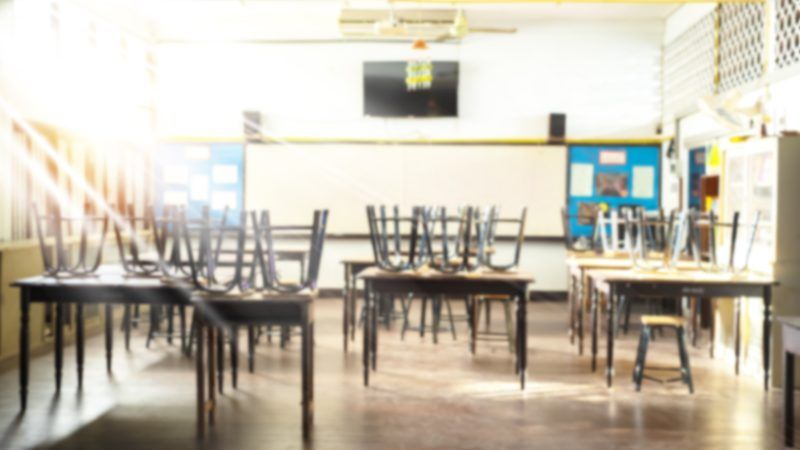Millions of Kids Left Classrooms During the Pandemic. New Data Show 50,000 Hadn't Returned 2 Years Later.
According to an analysis from the Associated Press, 50,000 children in 22 states were still missing from schools in fall 2022.

According to a new analysis from the Associated Press, 50,000 children were still estimated to be "missing" from American classrooms in fall 2022—two years after the COVID-19 pandemic caused school enrollment numbers to plummet.
While the number actually indicates an improvement in school attendance—the A.P. found that an estimated 230,000 children were missing in fall 2021—it also shows that thousands of children have nonetheless experienced multiyear disruptions to their educations following COVID-era school closures.
Following the wave of school closures that began with the start of the COVID pandemic in 2020, as many as 3 million schoolchildren went "missing" from school—meaning that they weren't enrolled in their local public school but hadn't switched to another school district, enrolled in private school, or started homeschooling either.
While most of these children soon returned, a significant minority stayed absent from classrooms. In February, research from the A.P. and Stanford researchers found that during the 2021–22 school year, 230,000 children were still out of school across 21 states and the District of Columbia. When the A.P. examined data from pre-COVID years, they found virtually no children were missing.
On Tuesday, the A.P. reported that an updated analysis found 50,000 children still missing from classrooms across 22 states and D.C. as of fall 2022. While the numbers signal that the vast majority of once-missing children have returned to classrooms, graduated, or formally dropped out of school, a persistent cohort of children absent long-term continues.
According to the A.P., while exact causes are difficult to pinpoint, bureaucratic hurdles could be a major factor holding children back from returning to the classroom. Many school districts have stringent policies of unenrolling children after long absences, while others require onerous paperwork proving a child's residency within the district or complicated medical requirements.
In Atlanta, for example, parents must provide eight separate documents to enroll their children in public schools, including a "complicated certificate evaluating a child's dental health, vision, hearing and nutrition," according to the A.P.
One mother of a seventh-grader with autism told the A.P. that she tried to enroll her son in their local public school as soon as the pandemic closures ended. However, she didn't have reliable transportation and said she couldn't find a nearby appointment to get him the required immunizations, causing her son to miss five months of school.
"He wasn't in school, and no one cared," she told the A.P.
This report joins the large body of evidence showing permanent damage to many American schoolchildren following extended COVID school closures. While the children who have returned to school show devastating learning losses, those who remain absent surely have even deeper deficits.



Show Comments (36)